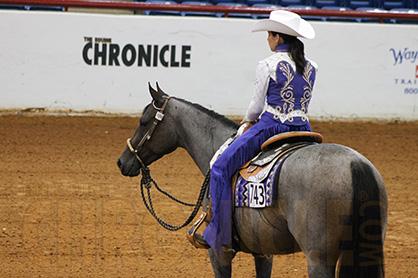One of the Quickest Ways to Improve Your Horse Business’s Bottom Line
 What Thief Takes Money From You Daily? -The Answer May Surprise You
What Thief Takes Money From You Daily? -The Answer May Surprise You
By: Doug Emerson, The Profitable Horseman
As a horseman, you have a fondness and attachment to horses you’ve bought, traded for, or have been gifted to you. You will probably agree, with the exception of a few, most horses are likeable and you see varying degrees of potential for improvement.
As a professional, you recognize horses are assets in a business and not pets, and you will admit a horse is either incrementally appreciating or depreciating in value.
As an asset, a horse is generating income as:
- a lesson horse
- a leased horse
- brood mare
- stallion
- inventory for sale
- rental for hire for ride or drive
As an income generating asset, a horse also has operating expenses associated with it. The obvious costs are feed, bedding, farrier, veterinary care, and labor. Add general operating overhead costs like utilities, lease or interest expense, real estate taxes, and bookkeeping to the list and you will arrive at an annual carrying cost for each horse in your inventory. This number can easily be $2,400 per horse per year and up.
Not only does each horse have an annual operating expense, it also has an opportunity cost. An opportunity cost is defined as the cost of something in terms of an opportunity foregone, an opportunity for higher income. In economic terms, there is an opportunity cost for every decision you make in your equine business.
Think about this. If a horse occupies a stall and generates only marginal income through lease, lessons, breeding, or has little or no potential for future income, this sounds harsh, but it is a thief horse.
Like a horse thief, a thief horse steals your potential to earn profit from the space and resources it occupies. That stall could be used for:
- Boarding
- Horse for training
- Lesson Horse
- Brood Mare
- A speculation horse “bought right”
- An empty stall for attracting the next opportunity
I’m the first to admit it’s difficult to make choices about letting horses go. Unlike trading in your old truck for a more reliable one, there is an emotional attachment to deal with in this process. Emotions may distract and interfere, especially from family and customers.
With not enough income to offset their carrying costs, non performing horses steal your profit. If you have horses in this class, help find them new jobs with another owner where they fit better in a program. Horses want to have a purpose, and you owe it to yourself and them to help make that happen. Admittedly, it can take some work to find a new home for some horses, but I know if you were afraid of work, you wouldn’t be working with horses.
If your aim is to make a living and a profit with horses, you need to make room for horses that pay their way as part of your business program. Make a list of the horses you own and start tracking the revenue they provide. Evaluate the income stream, deduct the carrying costs, and determine the contribution to your profit. Keep the performers and the retirees you treasure and help the rest find a new home.
Fill the vacated stalls and spaces with performing horses that will earn you money.
Doug Emerson helps professional horsemen struggling with the business half of the horse business. Visit his website: www.ProfitableHorseman.com for more articles like this one and to subscribe to his free electronic newsletter about being profitable in the horse business.










